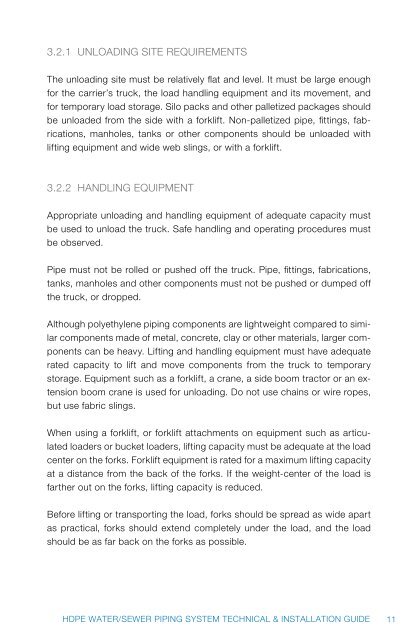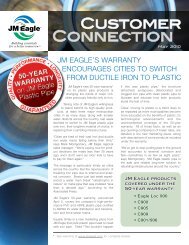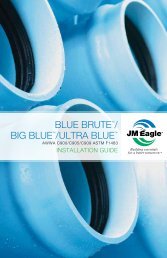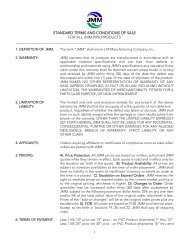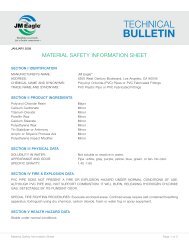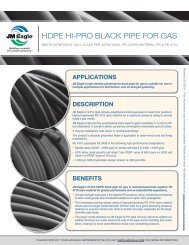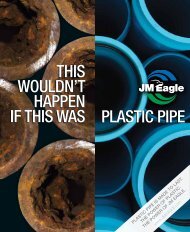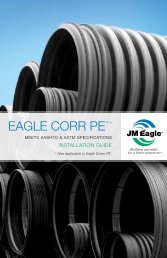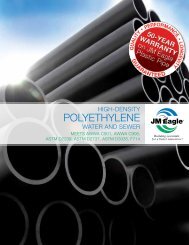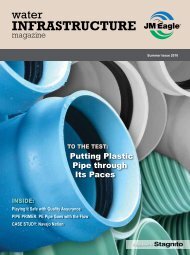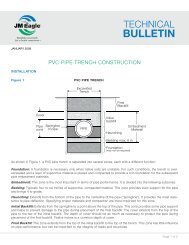Polyethylene Water/Sewer - JM Eagle
Polyethylene Water/Sewer - JM Eagle
Polyethylene Water/Sewer - JM Eagle
- No tags were found...
Create successful ePaper yourself
Turn your PDF publications into a flip-book with our unique Google optimized e-Paper software.
3.2.1 Unloading Site RequirementsThe unloading site must be relatively flat and level. It must be large enoughfor the carrier’s truck, the load handling equipment and its movement, andfor temporary load storage. Silo packs and other palletized packages shouldbe unloaded from the side with a forklift. Non-palletized pipe, fittings, fabrications,manholes, tanks or other components should be unloaded withlifting equipment and wide web slings, or with a forklift.3.2.2 Handling EquipmentAppropriate unloading and handling equipment of adequate capacity mustbe used to unload the truck. Safe handling and operating procedures mustbe observed.Pipe must not be rolled or pushed off the truck. Pipe, fittings, fabrications,tanks, manholes and other components must not be pushed or dumped offthe truck, or dropped.Although polyethylene piping components are lightweight compared to similarcomponents made of metal, concrete, clay or other materials, larger componentscan be heavy. Lifting and handling equipment must have adequaterated capacity to lift and move components from the truck to temporarystorage. Equipment such as a forklift, a crane, a side boom tractor or an extensionboom crane is used for unloading. Do not use chains or wire ropes,but use fabric slings.When using a forklift, or forklift attachments on equipment such as articulatedloaders or bucket loaders, lifting capacity must be adequate at the loadcenter on the forks. Forklift equipment is rated for a maximum lifting capacityat a distance from the back of the forks. If the weight-center of the load isfarther out on the forks, lifting capacity is reduced.Before lifting or transporting the load, forks should be spread as wide apartas practical, forks should extend completely under the load, and the loadshould be as far back on the forks as possible.HDPE WATER/SEWER PIPING SYSTEM TECHNICAL & INSTALLATION GUIDE11


